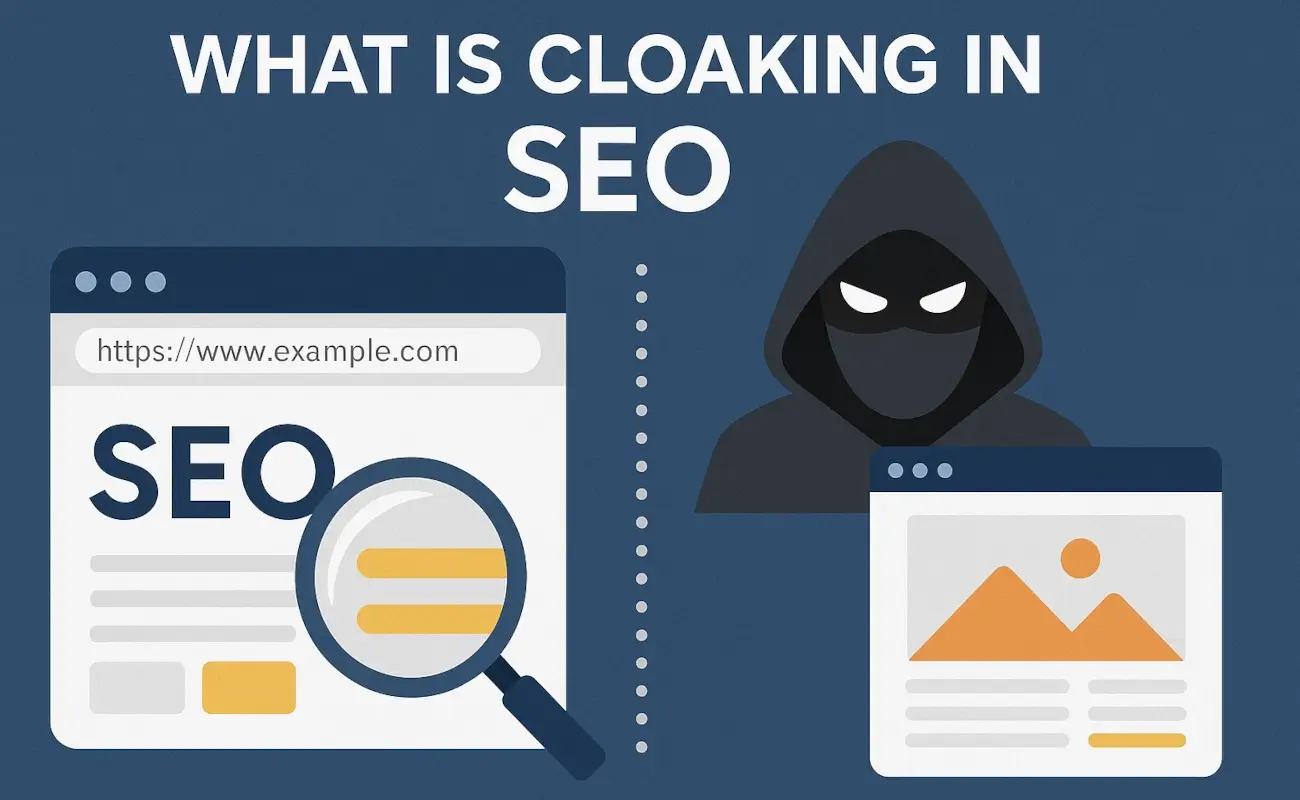
What is Cloaking in SEO?
Have you ever felt tricked by a link? Like it promised one thing, but when you clicked, it took you somewhere unexpected? That’s what cloaking in SEO is all about—tricking search engines to gain an unfair ranking advantage.
Let’s break it down simply, without the fluff.
What is Cloaking?
Cloaking is when a website shows one version of a page to search engines and a different version to users. The goal is usually to rank higher for certain keywords while delivering unrelated or less relevant content to visitors.
Search engines like Google consider cloaking a violation of their quality guidelines. If caught, your site can be penalized or even removed from search results altogether.
How Does Cloaking Work?
Cloaking uses server-side or client-side scripting to detect who is visiting the page—a search engine crawler or a human. Based on that, it delivers different content.
Examples include:
- A page that shows a travel guide to Googlebot but redirects users to a casino site.
- A page stuffed with keywords visible only to crawlers but hidden from users with CSS.
- Showing text-only content to crawlers while users see videos or interactive pages.
Why Do Some People Use Cloaking?
Let’s say someone runs a clothing shop. Their website doesn’t rank for “cheap phones,” but that keyword gets a lot of traffic. So, they cloak a page filled with phone-related content for search engines but show users the usual clothing page. It’s misleading, but they hope to drive more clicks.
Other common motives:
- Boosting rankings using irrelevant but popular keywords.
- Hiding affiliate links or spammy content.
- Tricking users into clicking on ads or installing malware.
While this might bring short-term traffic spikes, the long-term damage isn’t worth it.
Why is Cloaking Risky?
Cloaking might seem clever, but search engines are smarter than ever. Google uses multiple methods, like checking your site with different IPs and devices, to catch this trick.
If your site is flagged:
- You can lose rankings overnight.
- You may receive a manual action from Google.
- Your site might disappear from search results entirely.
For any serious business—whether you run a bakery, a law firm, or a web design and development company—trust is everything. Cloaking breaks that trust.
How to Spot Cloaking
You might not even know your site is cloaking if a developer or plugin misconfigured something.
Here’s how to check:
- Use Google’s URL Inspection Tool in Search Console to see how your site appears to crawlers.
- Compare what users see with what Googlebot sees using tools like Fetch as Google.
- Audit your plugins and scripts for hidden redirects or keyword stuffing.
If you're working with a web development agency, ask them to explain how your SEO tools work. Transparency matters.
What Should You Do Instead?
If you're tempted to use cloaking to rank faster, there are safer and better ways to grow.
Here’s what works:
- Create relevant content. If your business sells handmade shoes, focus on that. Use clear product descriptions, real images, and helpful blog posts.
- Invest in SEO. Work with a professional SEO company or web development firm in Nairobi that follows ethical practices.
- Improve user experience. Fast-loading websites, clear navigation, and mobile-friendly designs keep visitors on your site longer.
- Use structured data. Mark up your pages with schema so search engines understand your content better—without any tricks.
- Keep your content honest. What users see should match what search engines index.
Final Thoughts
Cloaking might promise a shortcut, but it's a trap. It erodes trust, breaks search engine rules, and damages your reputation. Building a clean, user-friendly website takes more work—but it pays off.
Instead of tricking algorithms, focus on helping real people. Your digital strategy should reflect the same values you practice in business: honesty, clarity, and relevance.
Want to improve your site’s SEO the right way? Start by checking your metadata, fixing slow load times, and writing content that solves real problems.
Your rankings—and your customers—will thank you.


